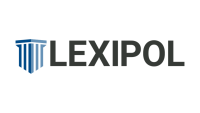On May 25, Lexipol held a webinar about recent national opioid settlement funding. Featuring funding experts and first responders, the webinar sought to inform public safety personnel about the unprecedented $26 billion in private funding settlement and its potential impact on all first responders’ ability to effectively respond to the effects of the opioid epidemic on their communities.
We’ve aggregated the top five questions received during and after the webinar to help you as you navigate accessing this money through local and state leadership. Keep in mind this will not be the only opioid settlement funding we see for communities – this is just the largest most recent national settlement.
Stay safe!
1: What can the national opioid settlement funding be used for?
Although specific uses will be determined by state and local governments, generally, the funds are approved for:
- Medication-assisted treatment
- Mental health treatment and capacity building
- Screening, intervention and referral services
- Training and support to emergency services professionals re: opioid overdoses and opioid-related adverse events
- Community education, outreach and prevention activities (special efforts are given to youth, criminal justice-involved populations and pregnant women)
- Naloxone and opioid-reversal interventions
- Revisions to prescribing practices
2: How do I get access to the funding? Is it an application or is there a list of state-level contacts for the settlements?
Each state is determining how to distribute funds. There is general guidance on how the funding can be utilized and each state is providing further interpretation on how specifically they plan to distribute and focus funds. Funds should start being accessible in May and June. To access state-specific guidance, visit the State Agreements & Legislation section of the National Opioid Settlement website.
Every state is going to be different in how this funding will be distributed. You may see grant programs stem from this funding; you may also see direct allocations to your city.
3: Can law enforcement benefit from the settlement funding?
Yes. Law enforcement can absolutely participate in the funding and there is specific language including all first responders for specific items like equipment, training and wellness initiatives for opioid abatement practices, as well as wellness and support services for first responders and others who experience secondary trauma associated with opioid-related emergency events.
When it comes to drug interdiction and enforcement, it will depend on the state. Most of the detail we’ve seen outlined in the state fund allocation plans addresses treatment, prevention and education. However, there are exceptions. For instance, Ohio’s guidance includes “expenditures relating to the opioid epidemic that address both community and statewide supply and demand reduction strategies including criminal interdiction efforts.” Note: Even if interdiction and enforcement aren’t outlined in your state’s plan, it may be worth a discussion with legislators or other key stakeholders to determine whether they are open to using the funding in this manner.
To access state-specific guidance, visit the State Agreements & Legislation section of the National Opioid Settlement website.
4: Is there any support material to help with writing when applying for the grants?
This is private settlement money being passed to participating states and then in turn making its way to local governments. Every state is going to be different in how it distributes funds. You may see grant programs stem from this funding; you may also see direct allocations to your city. It’s important to connect with your state Attorney General’s office to determine how the funding will be distributed as well as your local leadership to advocate for your department’s needs.
5: I don’t see my state listed in on the opioid settlement site. What does that mean?
It means the state Attorney General elected not to join this settlement. We recommend contacting your state Attorney General’s office to inquire on other litigation they are pursuing for opioid settlements.
Read more:
Measuring success in people, not numbers
Eagle County Paramedic Services launches a naloxone distribution program to help treat opioid overdoses in homes















